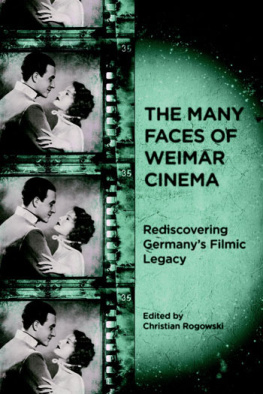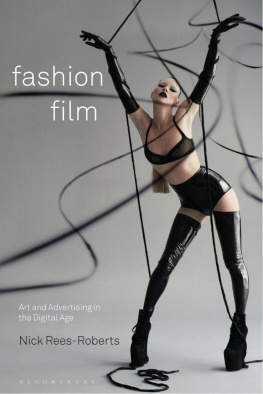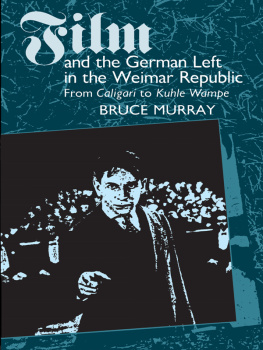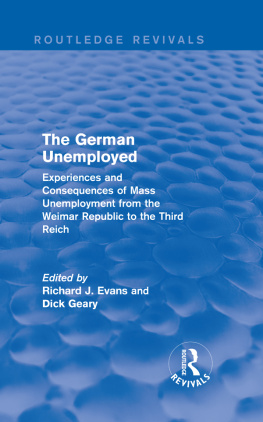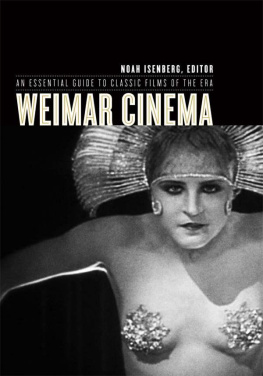
Women in Weimar Fashion
In the Weimar Republic, fashion was not only manipulated by the various mass media film, magazines, advertising, photography, and popular literature but also emerged as a powerful medium for womens self-expression. Female writers and journalists, including Helen Grund, Irmgard Keun, Vicki Baum, Elsa Maria Bug, and numerous others engaged in a challenging, self-reflective commentary on current styles. By regularly publishing on these topics in the illustrated press and popular literature, they transformed traditional genres and carved out significant public space for themselves. This book re-evaluates paradigmatic concepts of German modernism such as the flneur, the Feuilleton, and Neue Sachlichkeit in the light of primary material unearthed in archival research: fashion vignettes, essays, short stories, travelogues, novels, films, documentaries, newsreels, and photographs. Unlike other studies of Weimar culture that have ignored the crucial role of fashion, the book proposes a new genealogy of womens modernity by focusing on the discourse and practice of Weimar fashion, in which the women were transformed from objects of male voyeurism into subjects with complex, ambivalent, and constantly shifting experiences of metropolitan modernity.
Ganevas carefully researched and clearly written study is not only interesting to film studies scholars for the part that deals explicitly with film. Instead, the entire book works out parallels between the societal perception of fashion and film, both components of popular culture that promised unmatched brilliance and glamour and were medial systems that mirrored the experiences of Modernity in a very direct way and formed a feminine niche in mass culture. FILMBLATT.
Screen Cultures: German Film and the Visual
Series Editors:
Gerd Gemnden (Dartmouth College)
Johannes von Moltke (University of Michigan)

Contents
Illustrations
Acknowledgments
F ROM ITS VERY INCEPTION almost ten years ago, this project has benefited from the support of many people, to all of whom I am deeply grateful. As a doctoral student at the University of Chicago, I was enthusiastically guided by my academic mentors, Katie Trumpener, Miriam Hansen, and Sander Gilman, who steered me toward novel areas of exploration and challenging questions. My friends in graduate school Anke Pinkert, Valentina Izmirlieva, Katia Mitova, Cecilia Novero, Anna Diakow, and Judith Leeb critiqued multiple drafts of chapters. Throughout the years Katie Trumpener, Miriam Hansen, and Anke Pinkert persistently encouraged me to pursue the book project and helped me with advice for rewriting. Many thanks to all of my Chicago friends, especially Vreni Naess and Abby Brown.
During several research trips to Germany I was dependent on the help, knowledge, and responsiveness of numerous people, many of whom became dear friends. Back in 1996 Temby Caprio shared with me her apartment and helpful tips about archival research, while Kerstin Barndt and Johannes von Moltke lent me their expensive camera to take the first photographs of materials at the Kunstbibliothek in Berlin. Some of the images collected at that time appear in this book. Christine Waidenschlager, Gundula Wolter, Patricia Ober, and Katharina Sykora were generous with their time and information about the history of fashion in Berlin. Helmut Lethen has been excited about this project from the beginning and found time to read multiple drafts and give me precious feedback. Philipp Stiasny always managed to discover yet another valuable film source that I did not know about and provided me with photocopies of rare materials. I am grateful to Adelheid Rasche at the Kunstbibliothek in Berlin, Sammlung Modebild-Lipperheidesche Kostmbibliothek, for sharing with me her expert knowledge of fashion history and fashion photography. Many people at the Bundesarchiv/Filmarchiv were always responsive to my inquiries, especially Ute Klawitter, Julika Kuschke, and Maja Buchholz; Barbara Schtz and Evelyn Hampicke retrieved hard-tofind archival footage, screened it with me, and offered valuable insights. Peter Latta and Anett Sawall at the Filmmuseum/Deutsche Kinemathek in Berlin helped me search though the photographic and poster archives. Gundula Weiss and Friedemann Beyer were most helpful with research at the Friedrich Murnau Stiftung in Wiesbaden. During my trips to Germany I could always count on my friends Julia Bertschik, Werner Kindsmller, Uli Bruckner-Kindsmller, and Sibylle Lewitscharoff for wonderful dinners, stimulating discussions, and original insights. Julia Bertschik always had invaluable bibliographical references to offer. My biggest debt is to Nathalie Huet and Manfred Flgge for their kind hospitality during many visits to Berlin. Without Manfreds friendship, his generous sharing of research materials about Helen Grund, and the inspiring conversations we have had on literature, culture, and politics, this book would not have materialized.
For the most part this book was written in the United States, and I would like to acknowledge the helpful staffs of the interlibrary loan departments at the University of Chicago, the University of Notre Dame, and Miami University, who diligently supplied innumerable obscure, hard-toobtain books and microfilms. Special thanks to bibliographer Sem Sutter from the University of Chicago for his help with references. I was inspired to add a new chapter to the book after participating in the German Film Institute workshop Unknown Weimar at the University of Michigan in Ann Arbor in the summer of 2004. I am grateful to Eric Rentschler and Anton Kaes and to all the remarkable people I met in Ann Arbor for all their encouragement and feedback.
At my current academic home, Miami University, I enjoy the support of many colleagues. I am particularly grateful to the womens writing group Mary Cayton, Laura Mandell, Renee Baernstein, Helen Sheumaker, and Judi Hettick for pushing me to write even during the busiest periods of the school year. Ruth Sanders, Ben Sutcliffe, Ole Gram, Nicole Thesz, Sven Erik Rose, Erik Jensen, and Karen Eng have read various parts of the manuscript at various stages of completion and have offered much-needed feedback. Bob DiDonato has been unwavering in his enthusiasm for the project and has helped me throughout. A semester-long research leave, course releases, two summer grants from Miami University, and Mary Fahnestock-Thomass editorial help made the completion of the manuscript possible.
At Camden House, this project was embraced by Jim Walker. His belief in the worthiness of the book and his patient editorial work contributed enormously to the improvement of the manuscript. I would like to thank the editors of the series Screening Cultures, Gerd Gemnden and Johannes von Moltke, for their encouragement throughout the review process and to acknowledge the two anonymous readers for the detailed critical consideration they gave to my work.
I am happy to share the joy of publishing a book with my family and friends in Bulgaria. Sincere thanks go to Christian Takoff, Maria Krasteva, Diana Slavova, and Maya Yordanova. I am deeply grateful for the love and support of my parents, Marina and Mois Aroyo, and my in-laws, Maria, Iordan, Anna, and Georgy Ganev, without whom my summers in the last ten years would not have been as productive. My generous sister, Lora Aroyo, flew across the ocean a few times to be with me, offer help with babysitting, and teach me about electronic images. My best friend, my husband, Venelin Ganev, never ceased to believe in the originality of my work and never tired of reading draft upon draft of chapters. My children, Iori and Marty, have been the most beautiful presence in my life throughout the process of research and writing. It is to them that this book is dedicated.
Next page
